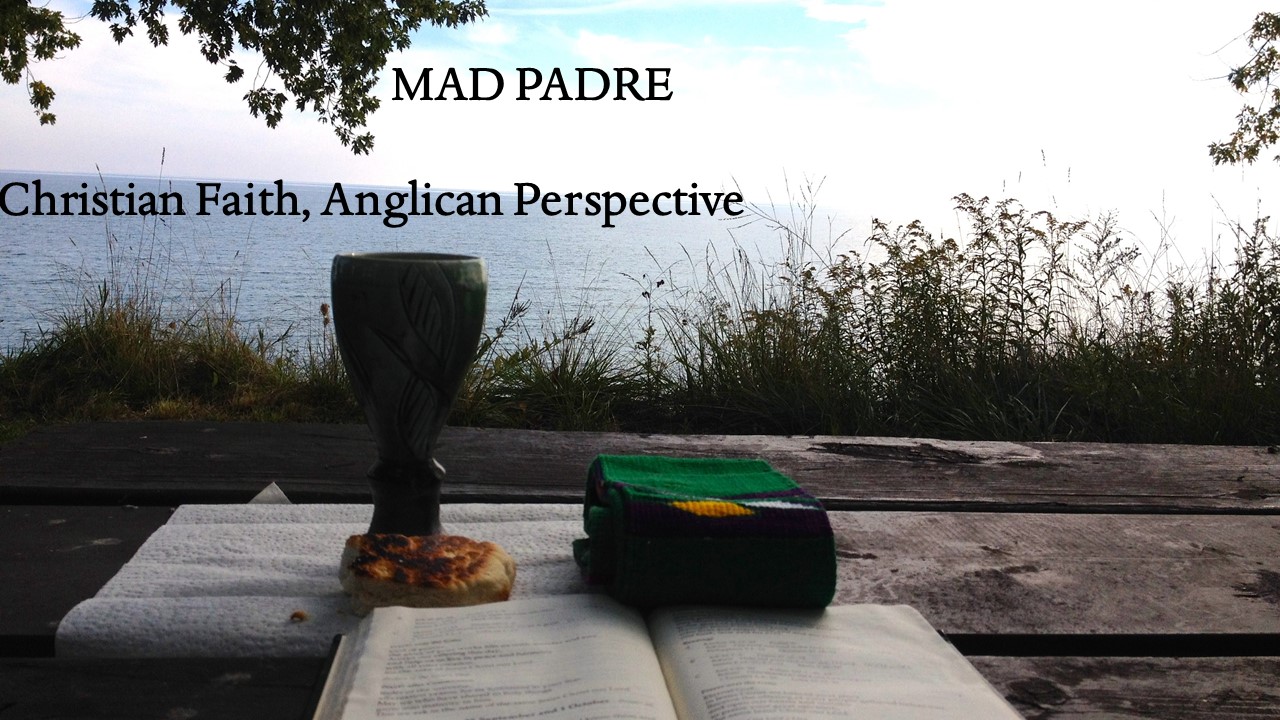A Homily for the Reaffirmation of Vows of Jane and Kim
All Saints, Collingwood, Anglican Diocese of Toronto, 12 August, 2023
And now faith, hope, and love abide, these three; and the greatest of these is love. (1 Corinthians 13.13)
Today we gather to give thanks for the work that God has done thus far in the union of Kim and Jane, and to ask God’s blessing that this good work will continue. It’s been my honour to get to know this couple over the last year, and it’s our pleasure to celebrate with them as they reaffirm their vows and have the wedding day that they’ve always wanted.
I have to say that today is a first in my career as a priest. I’ve married people before, but they’ve always been a man and a woman. Now Kim has graciously told me the she’s ok being called a dude, but this service did involve some careful rewording of the marriage ceremony, because it is a reaffirmation of vows that have already been made, and, well, let’s face it, there is no real dude involved. It was a bit of three-dimensional chess getting to this point today.
I thought it was a wonderful coincidence that we celebrated Jane’s bridal shower next store at the Rectory the day of Collingwood’s Pride Parade. Well, maybe that wasn’t a coincidence. After all, God does have a sense of humour!
One of the slogans you see associated with the Pride movement says, simply, “love is love”. Canadian society understood this truth faster than many Christians did, and it’s taken the church a while to catch up. In the Anglican Church of Canada we’ve had decades of debates about who can get married, and what marriage is for, and most of us would consent to what happens here today.
I’ve been ordained for twenty years, and like the Church I serve it’s taken me a while to figure our what God is doing with marriage. I think the witness of faithful couples like Jane and Kim has helped me arrive at a position where I too can say “love is love”. Just now I listened carefully to the words of Paul in 1 Corinthians 13, and I didn’t hear anything about which kinds of couples can enjoy love. Love as the church understands it is a gift of the Holy Spirit, and as we know from St. John, the Holy Spirit blows where it will.
So what do we mean today when we talk about Pride. As Canadians, we talk about Pride as our determination to protect people from hate and discrimination. As a Church, we have our rainbow Safe Space signs at our doors to show we also are determined not to give hate a home within our community. But, maybe there’s a danger in our church patting itself on the back and saying, “See how diverse and tolerant we are”, because I think Pride as God understands it is bigger than we can imagine.
I believe that God takes pride in any couple that shows in their lives together something of the selfless devotion that Kim and Jane, at their best, show to one another. God takes pride in all marriages that aspire to live out Paul’s words in 1st Corinthians, regardless of gender. Kim and Jane don’t have some of the advantages of health and wealth that we would all like to have, but they understand something of the selflessness of love. We as a community take pride in them, as we do in all marriages that show this devotion.
Kim and Jane, you are blessed with friends and family that have gathered with you today as a community to celebrate your love for one another. We are all proud of you, as you are in one another. May God bless you in the good work that was begun in your marriage, and may God give you many years together to love one another and to be proud of one another, as Christ love you and is proud of you.
Amen.



